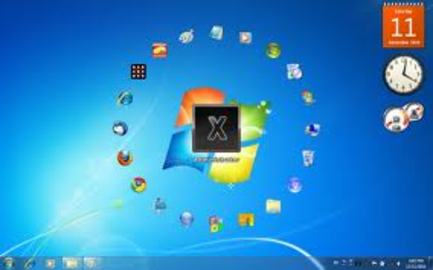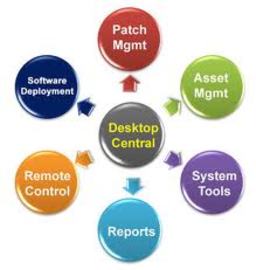Introduction

Centralization of the entire PCs, laptops and other computer devices of an organization refer to desktop management. To secure important desktop data and information is the major responsibility of any organization. Therefore desktop management is a tough job for an organization as data and information is the primary and valuable asset for them and its security is their foremost duty.
Step 1
- Desktop management policies must be formulated by the higher authorities of an organization and implementation of those policies must be made sure by regular checking of all desktop information to maintain credibility and availability of information.
- Desktop management of an organization must be done by providing security passwords to all the desktops devices. It can be done by creating awareness among the employees of the organization to avoid usage of programs that may send passwords in clear, avoid attending of viral e-mails, keeping a password that they can remember easily, avoid unattended desktops with lock-ups, save data with back-ups, etc.
Step 2
- To protect company’s desktop inventory, the user classification will help to protect inventory effectively. Through this user classification technique, respective department can only access to their required software that is needed for their work and functions.
- Penetration testing is an activity which is conducted for desktop management. It should be conducted with great care by authorized personnel under company’s code of conduct as it is the process of checking organization desktop inventory by applying simulated hacking techniques.
Step 3
- To protect desktops from viral attacks, strong and reliable automated anti-viruses must be installed that can detect even a mild virus attack to the desktop inventory. Beside automated anti-virus application, manual scanning can also be done to minimize the risk of virus attack on the storage devices of the desktop.
- Desktop management can also be improved by the installation of personal firewalls. Personal firewalls installed in desktop of an organization helps to generate a report against an unauthorized attempt to access the desktop information by the external and internal body. These personal firewalls are good measures to come across the potential hackers.
Tip 4

- Organization must have built active directory reports with them. Active directory reports are very important and useful as they provide information regarding all user accounts, recently created user accounts, recently modified user accounts, inactive user accounts, expired user accounts, unused user accounts, recently logged on user accounts, computer reports, domain reports, GPO reports and many more.
- Desktop management also provides the facility of patch management system i.e. it helps to identify the vulnerability status of all kind of assets. Automatic patch management system will help to identify the missing patches in the desktops and downloading of required patches can be done online.
Tip 5
- In order to keep an eye on desktop inventory, auditing must be done on daily basis. Whereas, in serious circumstances i.e. if any critical incidents occurs in any department then on demand auditing can also be conducted.
- To share same kind of information, knowledge or problem among the employees of your organization, desktop management system also provides the facility of communication through desktops.
Comments
Most Recent Articles
-
Discover 8 Tips For Management Desktop
Management Desktop is quite a challenging job, as it includes the process of managing all desktops, laptops and computer devices of an organization. Managing desktop inventory is not only di...